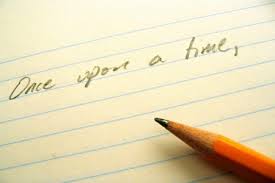I have pushed many of you to the very edge of what you are willing to say to a jury during your opening when I [politely] asked you to begin it with “Let me tell you a story.” Now that you have tested those waters and found them comfortable enough to wade in, let me ask you to hold your breath and take a deeper plunge.
Some new linguistic research is reporting the persuasive effects of those famous four words “Once upon a time . . .” This phrase can be traced back to stories as early as the 1300s. It, or an equivalent form of it, has been uncovered in a variety of languages (see panel) as the lead-in to a story. This lends credence to the idea that listening to stories may be a universal and “hard-wired” part of our brain. It cannot be an accident that “Once upon a time . . .” pops up in the story-telling traditions of disparate cultures from centuries ago, surviving to today.
Researchers are now sure of some factors related to “Once upon a time . . .” like:
- People are comforted because they know how to respond (quieting, listening, thinking) even though they do not yet know
- The context
- The characters
- Or the action that will follow
- But they DO know there will be context, character, and action coming soon. This phrase prepares them to give in to the world of a story.
- The phrase has two important psycholinguistic features:
- It creates distance from the here and now, instructing and allowing jurors to step back to see the big picture. Details can cloud the big picture. The details of your case will get filled in later, but in the opening, the jury needs to see that big picture first. The details make no sense without the big picture to frame them.
- There is a vagueness to it, a deliberate lack of specificity, which creates the suspense that encourages listening. It helps jurors see something bad that may have happened to someone else and relate to it themselves without having to experience it themselves. For instance, the characters and situations in Aesop’s fables are fanciful, but they allow us to put ourselves in the shoes of the characters without REALLY putting ourselves in the shoes of the characters. You’d like the jury to put themselves in your client’s shoes, but you are prohibited from directly telling them to do so. “Once upon a time . . .” does that for you.
-
- You can be very blatant with your use of the phrase and it will still work. You can say something like, “I am here to tell you the story of this case. This opening will outline the evidence we are going to present so you can reach your final decision. We have a good story to tell, too. It is an important story for my client and it is my client’s only chance to tell it. Good stories always begin with ‘Once upon a time.’ So, [slight dramatic pause] once upon a time . . .”
If you have ever been to my workshop on Story-Telling, then you know for certain that whoever tells the best story, wins.
Share This Story, Choose Your Platform!
Click below to add your email address to our mailing list and receive the latest Persuasion Tips right in your inbox!

